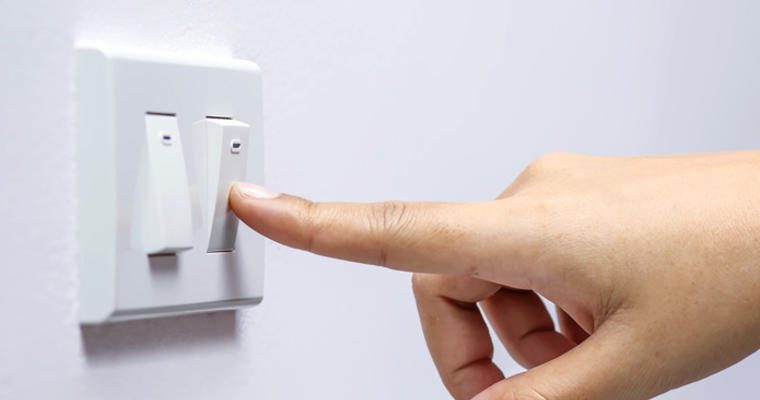Drip. Drip. Drip. In your kitchen, the same leaky-faucet sound that makes people restless at night should be a wake-up call: Water waste is a drain on your budget. So is energy waste, and learning small ways to address each can have a big impact on your bottom line.
4 Key areas to save
1. Fix leaks. Water costs have risen rapidly in recent years, especially in areas affected by drought. Fixing one small leak of two-tenths gallons of hot water per minute saves upwards of $1,400 per year. Plus, “you pay for hot water leaks three times,” says Dana Fillmore, U.S. National Healthcare Marketing Manager for Gordon Food Service®, “the water itself, the sewer usage, and the energy used to heat the water.”
2. Manage lighting. Don’t waste electricity in an empty room. Use compact fluorescent lamps and install occupancy sensors. At Sunny Hill Nursing Home in Joliet, Illinois, new lighting and motion sensors, including sensors in lighted vending machines, contributed to an energy overhaul resulting in $71,000 in energy savings since 2012.
3. Consider operational efficiencies.
- Keep freezers and fridges full to save on cooling costs.
- Identify use patterns to minimize the time you spend preheating and shut cooking equipment down during slow times. For most commercial equipment, start up time is 15-20 minutes, but can be up to an hour for heavy equipment; consult the manufacturer for timing.
- Keep lids on boiling pots. Cooking without lids can take three times as much energy.
- Rack dishes the right way, pre-soak pots and pans, and wash full loads instead of partial to improve dishwashing efficiency.
4. Perform maintenance. Work with your maintenance department on a monthly basis to conduct routine upkeep. Walk through the kitchen with them and follow-up to ensure completion.
- Routinely clean and maintain your equipment; grease and sediment build-up can force it work harder.
- Make the cleaning of roof-top equipment part of the schedule; exhaust build-up can comprise effective ventilation and increase your energy costs.
- Check pipe insulation so the water heater doesn’t cool as it gets to where it’s needed.
- Keep the range hood cleaned and in place to manage heating and cooling and help appliances run efficiently.
- Make sure coolers are in proper order, replacing door gaskets, cleaning coils, repairing strip curtains, and making sure door closers work.
Clean up on energy savings
One simple way to save money is by installing low-flow spray valves, says Gordon Food Service Chemical & Beverage Service Manager Bruce Schmitt.
“They look like showerheads that spray jets of water to pre-rinse soiled cookware and dishes,” Schmitt says. “A hand control turns the nozzle on and off instantly, so water doesn’t flow continuously. And pre-rinsing also saves dishwasher energy.”
Schmitt and Gordon Food Service Chemical & Beverage Category Analyst Stephen Saunders agree that improper dishwashing techniques may mean washing dishes a second time, which is a waste of water and energy.
To avoid this, Schmitt says, read the equipment manual and understand the cleaning process. The right amount of water, at the right temperature, combined with the right cleaning solutions and sanitizers results in clean warewash and cost savings.
For example, warewashing machines using water that’s too hot can compromise the effectiveness of the sanitization cycle, so it’s important to properly set the final rinse temperature to the recommended minimum and maximum range of 180º-194ºF. A heater set 20 degrees too high can cost $1,300 a year in energy costs.
Think outside the kitchen
Similar practices apply to laundry. Cleaning linens, uniforms, and dishtowels takes an understanding of equipment settings, detergent properties, and water temperature. And don’t overlook the dryer, Saunders says.
“If the towels come out too rough, check the heat and the drying time,” Saunders says. “Over-drying wastes energy and can damage fabric, which adds to replacement costs.”
Another quick win for saving water is during cleanup. Unless you’re mopping floors, there’s little need for a bucket with gallons of water. In fact, Saunders says, using a microfiber cloth for cleaning means a spray bottle of sanitizing or disinfecting solution can replace the cleaning bucket for many jobs.
“The solution doesn’t soak deep into a microfiber cloth, and the fibers stay in direct contact with a smooth surface, spreading the solution efficiently,” Saunders says. “Microfiber cloths not only save water, they can be laundered and used again, so you aren’t throwing away wipes.”
Diagnose best practices
Ask your Gordon Food Service Chemical and Beverage Technician and Customer Development Specialist for help with scheduling an energy audit covering your warewashing, housekeeping, laundry, and foodservice areas.











